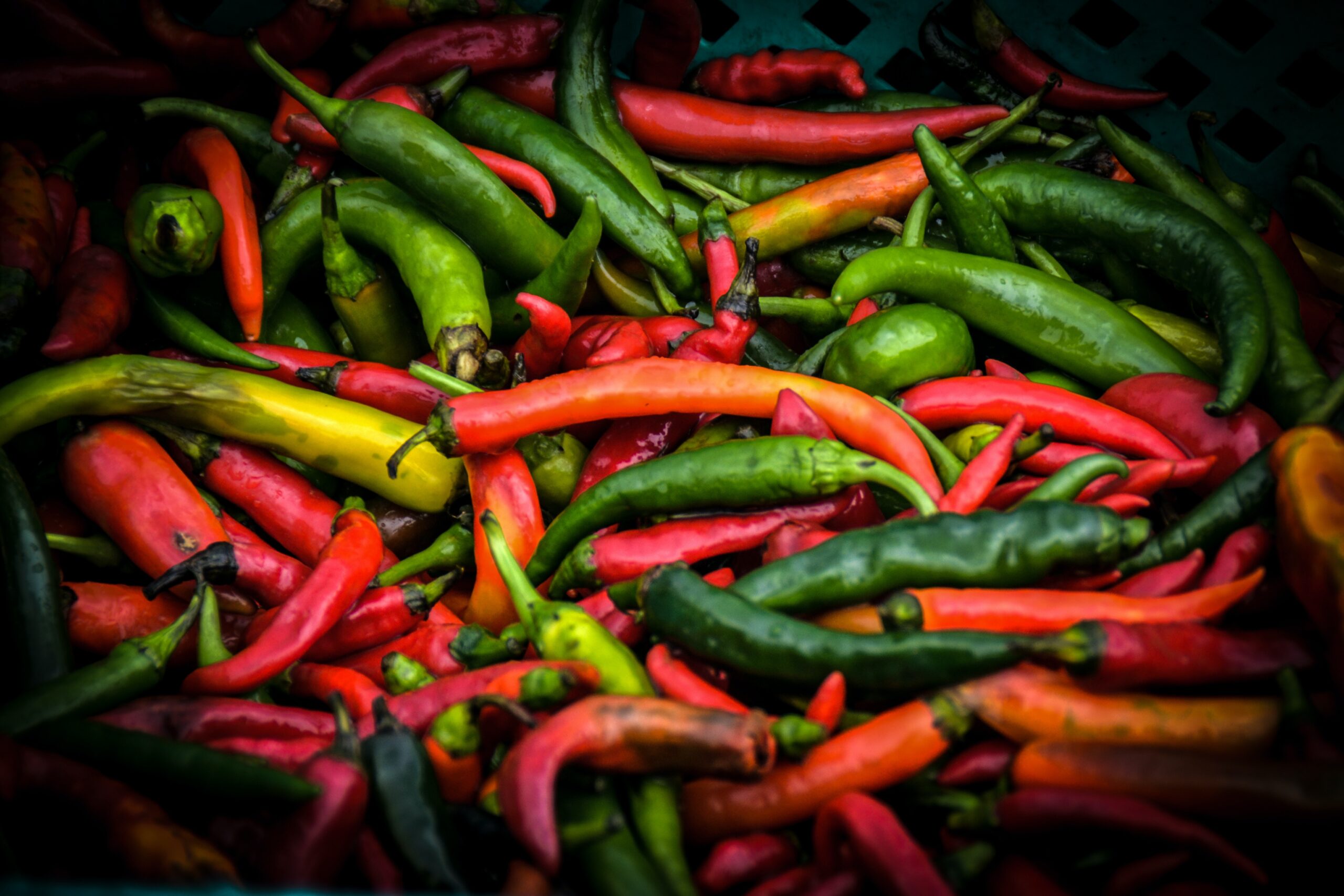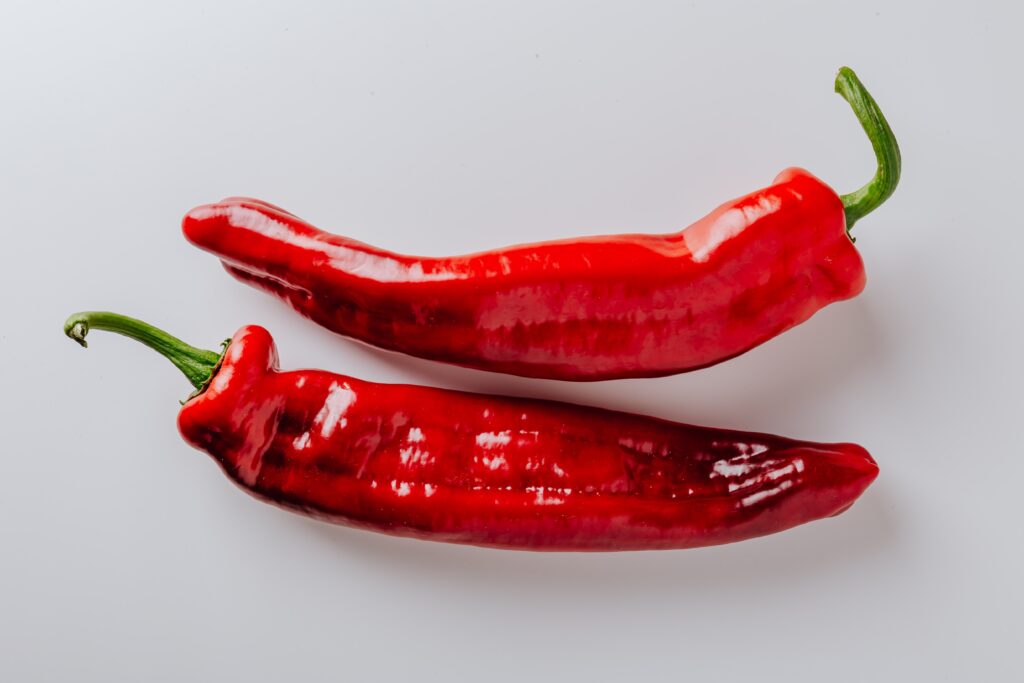
Not everyone has the ability to tolerate spicy food well or a lot of heat. It can be challenging to adjust to spicy food at first, but if you give it a try, there are a ton of new dishes and cuisines to sample. Please continue reading if you want to learn more about how to adjust to spicy food.
What Is Spiciness?
We frequently hear that certain foods “taste” spicy. In contrast to sweet, sour, or salty flavors, the spice cannot be tasted. What happens is that the active compound in spicy food called ‘capsaicin’ triggers sensory neurons. Your nose and tongue are two places where you can find these.
So when you eat a chili pepper, your mouth feels like it is burning because your brain thinks that it is actually in contact with a hazardous heat source which isn’t the case. Capsaicin is to blame for this sort of chemical ruse.
This triggers the brain’s fight-or-flight response, which results in sweating, runny noses, and a rapid heartbeat. It does not harm your body physically or inflict any damage.
Though this may sound contradictory, capsaicin is a well-known pain relief ingredient. It has long been used as a treatment for joint pain caused by osteoarthritis, rheumatoid arthritis, and other types of arthritis.
Because eating spicy food can increase metabolism and aid in fat burning, research suggests that capsaicin may help people lose weight.
Easy Ways To Get Used To Spicy Food
Start Small
Start by adding extra black pepper to your mac and cheese or red pepper flakes to your soup. Using ketchup spiked with a few drops of Tabasco as a starting point, Seema Vora, an integrative health practitioner in NYC, advises her clients to adopt a spicy diet for a variety of health benefits (stimulating metabolic rate, lowering blood pressure, etc.).
Savor The Flavor
Focus on tastes and aromas that make you want to keep eating. Simply keep your composure. The use of excessive amounts of spice is the most common error people make when seasoning food.
Sparingly utilizing fresh spices enhances the flavor. A dish should not be muddled with a variety of spices and flavors. Instead, add one spice at a time to see if you like its flavor.
Eat Something Spicy Every Week
You’ll learn to like spicy food if you eat it more frequently. Your tongue becomes used to the sensation and the flavors of the food become more dynamic as you become more accustomed to the spiciness.
These spicy foods will soon taste like nothing if you persist, while mildly spicy foods will taste mild. Eat spicy food once a week to start. You’ll eventually come to enjoy it. In a few months, you might also find yourself actively seeking out spicy foods.
Capsaicin is the name of the substance that produces heat. Your body gets used to capsaicin in the same way that it does to caffeine and alcohol.
Always Eat Hotter
As you get used to the heat, transition from mild to moderate. If you want your food to be medium-hot, swap out the tabasco for sriracha and order it there. Before using jalapenos and serrano chilies in your cooking, be bold and try banana and poblano peppers.
As a result, you can handle sharpness better and more gradually. Take a bite of a bhut jolokia, scotch bonnet, or habanero chili when you’re ready for something extremely hot.
Drink Milk To Soften The Heat

Milk’s fat and protein balance out the food’s spice. This has been demonstrated by science. When eating something very spicy with friends, pour yourself a tall glass of milk. Every few bites, drink a little.
Then the sharpness instantly becomes softer. If you’re eating a spicy taco or chili, some sour cream is also beneficial. If you want to cool things down, skimmed milk works just as well as whole milk.
Take An Antacid Or Eat Something Beforehand If The Heat Upsets Your Stomach
When the stomach is empty and unprotected, capsaicin can irritate it. Take an antacid before going out with friends in case they eat something spicy, protecting your stomach.
To fill your stomach and give the capsaicin something to latch onto when it hits your stomach, you can also eat a small snack like a sandwich or some mashed potatoes.
Avoid taking antacids in excess. Its overabundance may make the stomach’s acid production more challenging. If you plan to spend a month or more in Thailand, you might want to take it occasionally as a precaution rather than every day.
Breathe Through Your Mouth While You Eat
To get rid of the heat, slowly exhale after each bite. It will only get worse if you resist and grit your teeth. Exhale slowly to calm your throat, but avoid blowing your entire exhalation in the person seated across from you.
It makes a big difference, but people rarely consider such minor details. On a psychological level, this can also be beneficial. Imagine blowing the chili flakes into the air if you are in pain. Already, the sting of this concept has subsided.
When You Can, Request To Add The Heat Yourself
When dining out, you might be able to ask to add the heat yourself to some foods. The fact that you can customize the level of heat is fantastic. Be aware that depending on the dish, this might not be possible at every restaurant.
Within the confines of your own kitchen, you can experiment with various heat levels. How hot will you go?
Enjoy The Process
Learning to appreciate spicy food is the objective! You can increase your tolerance for spicy food even if you don’t think you can.
Although it is unclear why some people really crave spicy foods, there are probably a number of factors at play, including your environment and prior exposure to hot foods.
Not enjoying hot food need not make you feel guilty. It is just a matter of taste and preference; there is nothing wrong with it.
Final Words
Find your preferred heat level by conducting some experiments at home. Do not exert too much effort if your tolerance is not rising or if you are not coming to appreciate the heat. Spicy food won’t “kill” your taste buds. This is a typical myth. Simply put, the body is reacting defensively to the pain by making the tongue numb.
